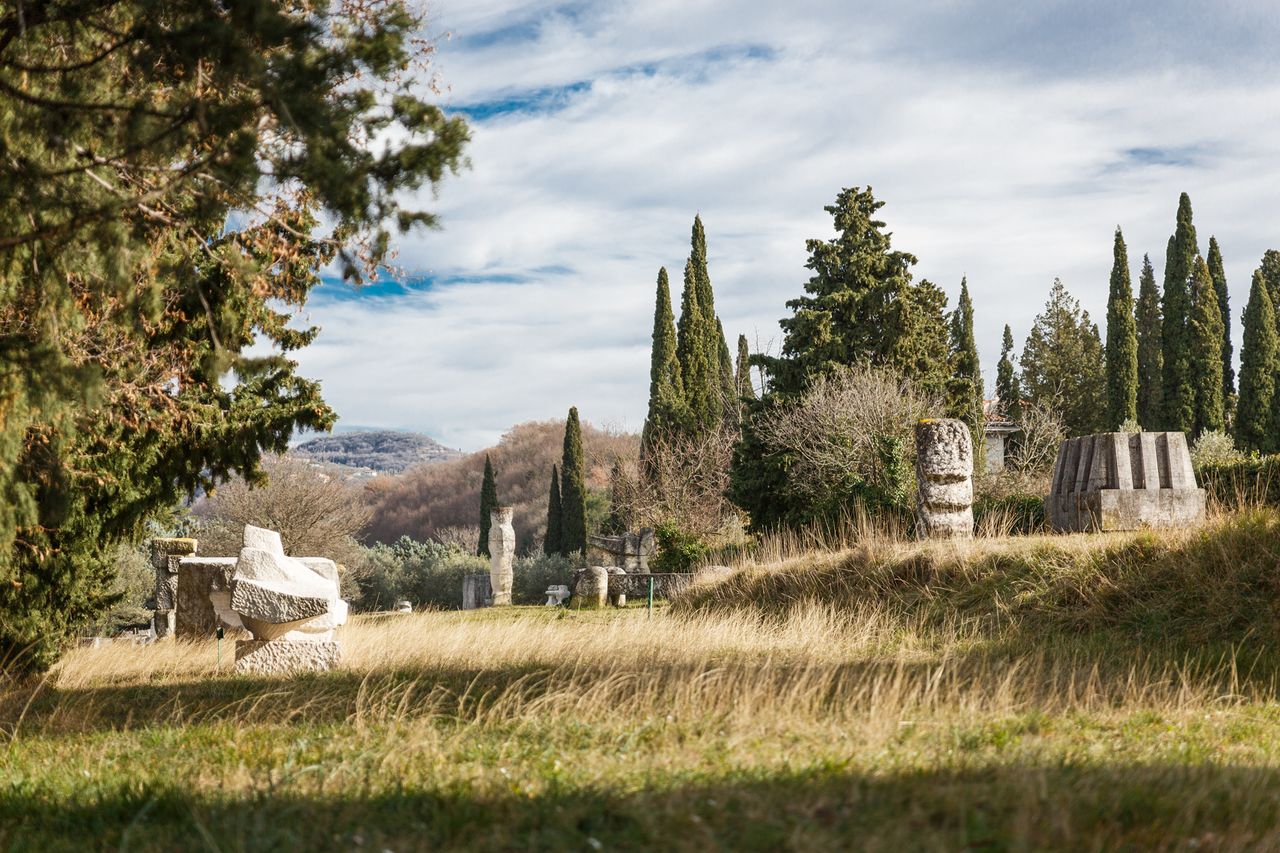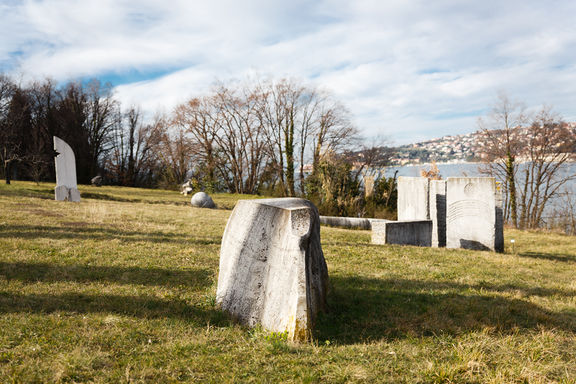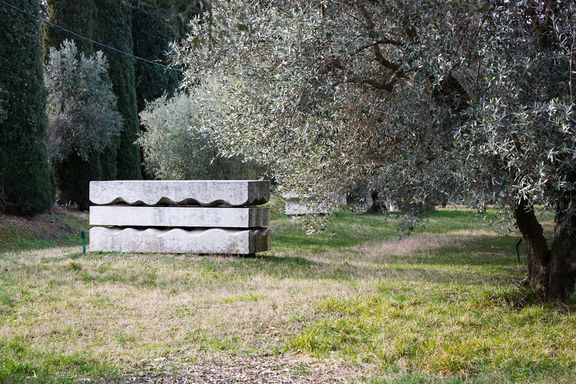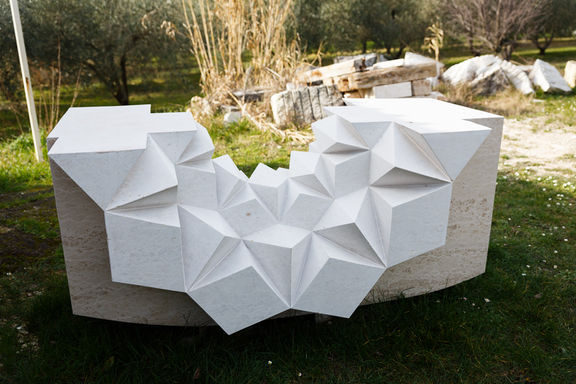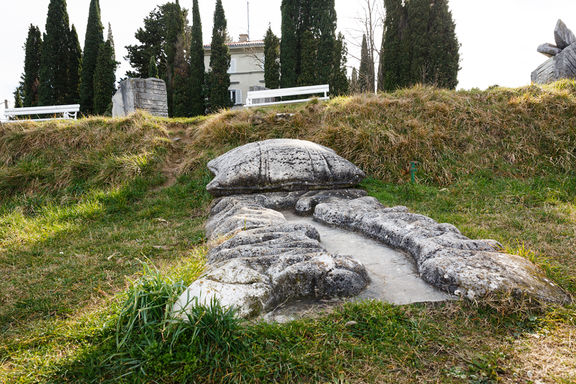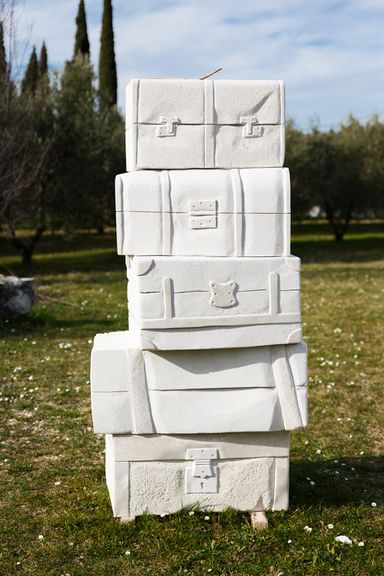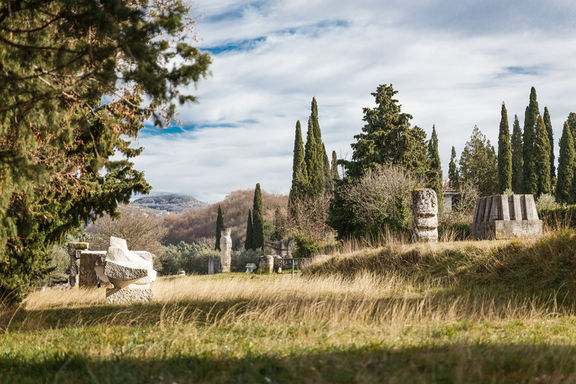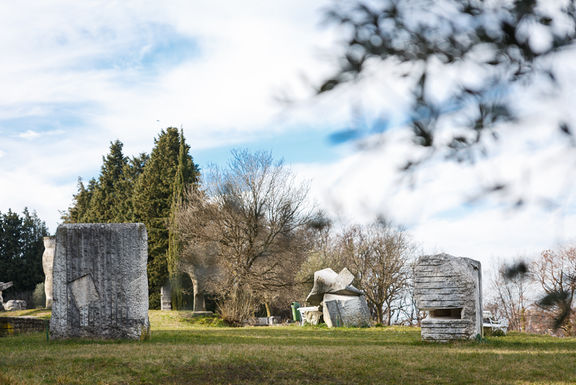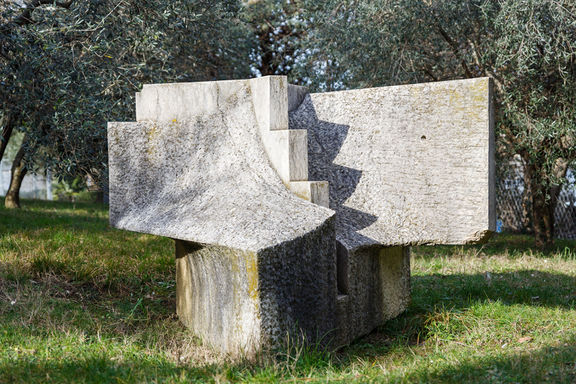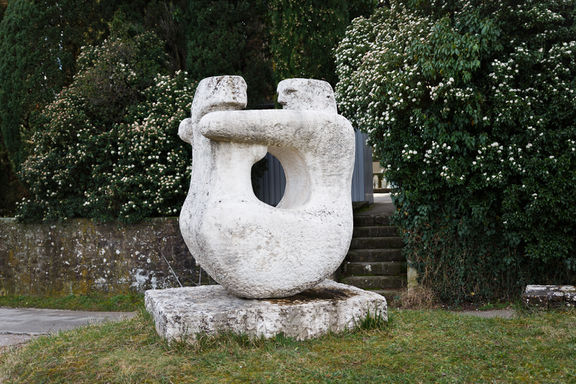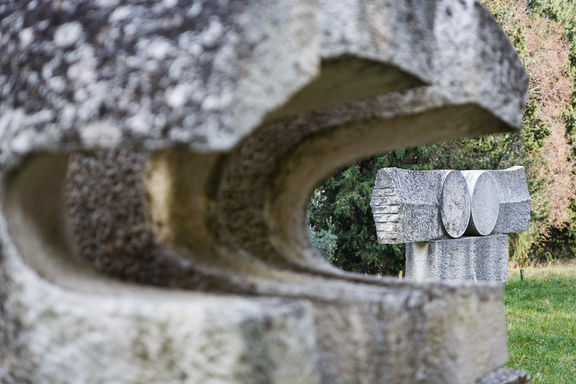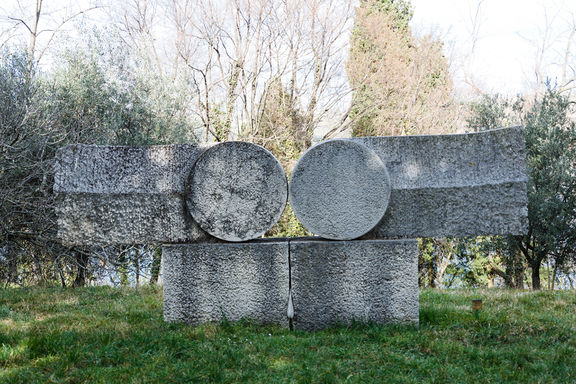Difference between revisions of "Forma Viva Open Air Stone Sculpture Collection, Portorož"
Anže Zorman (talk | contribs) |
(new acting director) |
||
| (9 intermediate revisions by 3 users not shown) | |||
| Line 1: | Line 1: | ||
{{Article | {{Article | ||
| status = | | status = | ||
| − | | maintainer = | + | | maintainer = Anže Zorman |
}} | }} | ||
{{Infobox | {{Infobox | ||
| − | | name = Forma Viva Open Air Stone Sculpture Collection, | + | | name = Forma Viva Open Air Stone Sculpture Collection, Portorož |
| − | | localname = Forma viva | + | | localname = Forma viva Portorož |
| street = Park at Seča | | street = Park at Seča | ||
| town = SI-6330 Piran-Pirano | | town = SI-6330 Piran-Pirano | ||
| + | | map = https://www.openstreetmap.org/?lon=13.5993&lat=45.4986&zoom=13&layer=mapnik | ||
| telephone = 386 (0) 5 671 2080, 386 (0) 5 673 2689 | | telephone = 386 (0) 5 671 2080, 386 (0) 5 673 2689 | ||
| fax = 386 (0) 5 671 2090 | | fax = 386 (0) 5 671 2090 | ||
| Line 14: | Line 15: | ||
| managed by = Obalne galerije - Coastal Galleries | | managed by = Obalne galerije - Coastal Galleries | ||
| contacts = {{Contact | | contacts = {{Contact | ||
| − | | name = | + | | name = Mara Ambrožič Verderber |
| role = Acting director | | role = Acting director | ||
| email = | | email = | ||
| Line 21: | Line 22: | ||
{{Teaser| | {{Teaser| | ||
| − | The [[Forma Viva Open Air Stone Sculpture Collection, | + | {{Wide image|Forma Viva Open Air Stone Sculpture Collection Portoroz 2020 Photo Kaja Brezocnik (1).jpg}} |
| + | The [[Forma Viva Open Air Stone Sculpture Collection, Portorož]] was born under the auspices of the International Symposia of Sculptors called [[:Category:Forma Viva Collection|Forma Viva]]. It is one of four such permanent outdoor exhibitions of sculptures, presented in both specially designated parks and spread across urban regions. Dedicated to a profoundly public dimension of art, this enterprise is the oldest still active sculptors symposium of its kind in the world. | ||
| + | |||
| + | The name Forma Viva stands for both the sculptors meeting which first took place in [[established::1961]] and for the resultant collections. The one in Portorož is mostly located on a peninsula called Seča, with a significant part of the works spread around other three coastal towns. It is taken care by the [[Obalne galerije - Coastal Galleries|Coastal Galleries]]. | ||
}} | }} | ||
| − | + | ==Concept== | |
| − | + | The few basic premises of the Forma Viva meetings are that the organisers take care of the materials, tools and provide for the sculptors during their work. The artists are free to create various, often monumental sculptures according to their particular vision and style. Afterwards they donate their works to the collections, with the locations usually chosen beforehand. | |
| − | + | Each of the four venues of the Symposia is dedicated to a specific material for the sculptures, selected with regards to the local context. Used in Portorož is the hard and bright Istrian marble (that among other things was used for the fountains in Venice) from the quarries located not far away. | |
| + | ==Background and history== | ||
| + | |||
| + | Initiated by the sculptors [[Jakob Savinšek]] and [[Janez Lenassi]], the first two Forma Viva symposia were organised in [[Forma Viva Open Air Wood Sculpture Collection, Kostanjevica na Krki|Kostanjevica na Krki]] and in Portorož in 1961. Later, they were joined by ones in [[Forma Viva Open Air Steel Sculpture Collection, Ravne na Koroškem|Ravne na Koroškem]] (1964) and [[Forma Viva Open Air Sculpture Collection, Maribor|Maribor]] (1967). Modelled after a similar sculptors gathering in Austria, Forma Viva is quite special in that it was (and remains) a geographically very diverse affair. | ||
| + | |||
| + | At first the meetings were held annually in both Portorož and Kostanjevica, and mutual visits between the two sites were customary (with roughly a dozen invited artists per site). As of 1967 they started to be held alternately, each every two years, with the ones in Ravne and Maribor organised on a less frequent basis. While the end of the 1980s saw three of the symposia temporarily terminated, the Portorož one remains the only one with a continuous run. | ||
| + | |||
| + | In the course of the following five decades sculptors from all over the world participated in the project, enriching various landscapes with around 350 sculptures. While the ones in Maribor and Ravne na Koroškem are spread over the wider urban region, Portorož and Kostanjevica have most of the pieces gathered is specially designated sculpture parks. | ||
| + | |||
| + | ==The sculpture collection== | ||
| + | |||
| + | The Portorož collection is currently comprised of 150 pieces of various sizes, from monumental ones to some smaller pieces. About two thirds of them are set in Seča in a special sculpture park, overlooking the sea and surrounded by pine trees and olive trees. Another third can be found all over the coastal towns, in their squares and parks. While some of the pieces were made especially for their particular urban locations, others were moved there subsequently. | ||
| + | |||
| + | While a few gatherings were focused on specific urban projects and featured collaborative work of sculptors, most of them took place at the worksite in the park. The landscaping arrangement of the park itself was given a general direction by [[Vojteh Ravnikar]] and [[Stane Bernik]] in 1983. | ||
| + | |||
| + | Nowadays an open public call is the most common way of choosing the participating artists, but in the early decades the better part of them was chosen by a committee that invited the most prominent sculptors globally. Some of the artists hosted in recent years are Zhao Li from China, the New York-based Macedonian Gorazd Poposki, Peter Roller (SK), Chris Peterson (NL), Graziano Pompili (IT), Jose Villa Soberon (CU), Donald Porcaro (US), Renzo Durante (IT), [[Miha Pečar]] and [[Marko Zelenko]]. | ||
==See also== | ==See also== | ||
| Line 40: | Line 59: | ||
==External links== | ==External links== | ||
| − | *[http://www.obalne-galerije.si/index.php/si/cat/3 Forma Viva Open Air Stone Sculpture Collection, | + | * [http://www.obalne-galerije.si/index.php/si/cat/3 Forma Viva Open Air Stone Sculpture Collection, Portorož website] (in Slovenian) |
| − | + | ||
| + | {{Gallery}} | ||
[[Category:Museums]] | [[Category:Museums]] | ||
Latest revision as of 03:19, 16 December 2020
Concept
The few basic premises of the Forma Viva meetings are that the organisers take care of the materials, tools and provide for the sculptors during their work. The artists are free to create various, often monumental sculptures according to their particular vision and style. Afterwards they donate their works to the collections, with the locations usually chosen beforehand.
Each of the four venues of the Symposia is dedicated to a specific material for the sculptures, selected with regards to the local context. Used in Portorož is the hard and bright Istrian marble (that among other things was used for the fountains in Venice) from the quarries located not far away.
Background and history
Initiated by the sculptors Jakob Savinšek and Janez Lenassi, the first two Forma Viva symposia were organised in Kostanjevica na Krki and in Portorož in 1961. Later, they were joined by ones in Ravne na Koroškem (1964) and Maribor (1967). Modelled after a similar sculptors gathering in Austria, Forma Viva is quite special in that it was (and remains) a geographically very diverse affair.
At first the meetings were held annually in both Portorož and Kostanjevica, and mutual visits between the two sites were customary (with roughly a dozen invited artists per site). As of 1967 they started to be held alternately, each every two years, with the ones in Ravne and Maribor organised on a less frequent basis. While the end of the 1980s saw three of the symposia temporarily terminated, the Portorož one remains the only one with a continuous run.
In the course of the following five decades sculptors from all over the world participated in the project, enriching various landscapes with around 350 sculptures. While the ones in Maribor and Ravne na Koroškem are spread over the wider urban region, Portorož and Kostanjevica have most of the pieces gathered is specially designated sculpture parks.
The sculpture collection
The Portorož collection is currently comprised of 150 pieces of various sizes, from monumental ones to some smaller pieces. About two thirds of them are set in Seča in a special sculpture park, overlooking the sea and surrounded by pine trees and olive trees. Another third can be found all over the coastal towns, in their squares and parks. While some of the pieces were made especially for their particular urban locations, others were moved there subsequently.
While a few gatherings were focused on specific urban projects and featured collaborative work of sculptors, most of them took place at the worksite in the park. The landscaping arrangement of the park itself was given a general direction by Vojteh Ravnikar and Stane Bernik in 1983.
Nowadays an open public call is the most common way of choosing the participating artists, but in the early decades the better part of them was chosen by a committee that invited the most prominent sculptors globally. Some of the artists hosted in recent years are Zhao Li from China, the New York-based Macedonian Gorazd Poposki, Peter Roller (SK), Chris Peterson (NL), Graziano Pompili (IT), Jose Villa Soberon (CU), Donald Porcaro (US), Renzo Durante (IT), Miha Pečar and Marko Zelenko.
See also
- Forma Viva Collection
- Obalne galerije - Coastal Galleries
- Forma Viva Open Air Sculpture Collection, Maribor
- Forma Viva Open Air Steel Sculpture Collection, Ravne na Koroškem
- Forma Viva Open Air Wood Sculpture Collection, Kostanjevica na Krki
- Ex-tempore Piran - International Painting and Ceramics



